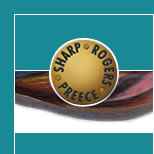 |
Chapter
Introduction | Web Resources
| Assignment Comments
| Teaching Materials
The websites in this section present examples of usability testing and field studies. Some of them also contain information about how to perform the methods used in usability testing and field studies. For example, there are templates for designing questionnaires. These websites are also relevant to chapters 7 and 8.
http://usableweb.com/
One of the first links on Keith Instone's usableweb site is to a page of links about user testing.
The usability testing page http://usableweb.com/topics/000878-0-0.html
Provides practical advice to help novices. For example, it discusses the basics of usability testing, how to adapt basic techniques for different situations, whether testing needs to be done in a laboratory and many other important issues. There are also links to articles and to guidelines and there are links to logging tools and articles about logging analysis.
http://www.consult-me.co.uk/csc-case-studies.htm
This site contains brief accounts of case studies that show how designers evaluated usability during the design process.
http://www.asktog.com/columns/042ButterflyBallot.html
Take this link on Bruce Tognazzini's website to read about the usability fiasco of the Butterfly Ballot in Florida in the 2000 US Presidential elections.
http://www.otal.umd.edu/hci-rm/index.html
This site was developed by students at the University of Maryland and it offers a classification and descriptions of some key techniques that are used in field studies. It also provides a useful overview of different types of data logging and links to a variety of logging tools.
http://www.alice.org/Randy/Some%20Techniques%20for%20Observing%20Users.pdf
This paper was published in 1992 and presents steps for doing observation. It is written by Kathleen Gomell of the Advanced Technology Group, Apple Computer Inc. This division of Apple Inc. no longer exists but it did much innovative work.
http://pages.cpsc.ucalgary.ca/%7Esaul/681/1997/amy/ethnography.html
This site provides a useful overview of ethnography written by Amy McCleverty, a graduate student at the University of Calgary.
http://www.acm.org/%7Eperlman/question.html
This is one of the best sites for learning about questionnaires. In addition to descriptions and good references the site also contains templates for you to try out or to build your own questionnaires. The results can be mailed either to yourself or someone else. The questionnaire templates provide questions with Likert or Semantic scales. There are also fields for open-ended text comments. Clicking on a small icon next to each Likert scale question causes a open-ended comment area are to be produced.
http://www.lap.umd.edu/quis
These questionnaires, developed at the University of Maryland Human-Computer Interaction Laboratory, have been used for many years and have recently been made available on the web. They are tried and tested but unfortunately there is a licensing fee for use, although this fee is reduced for students.
http://www.fas.harvard.edu/~stats/survey-soft/survey-soft.html
This site provides many useful links to survey software analysis tools.
http://hfrg.ucc.ie/resources/qfaq1.html
This site offers a list of important questions about questionnaire design in usability testing and usability engineering. For example, Dr. Jurek Kirakowski asks: what is a questionnaire; how do you analyze open-ended questionnaires; how can I tell if a question should use a Likert scale or not; can you tell if a respondent is lying; and many other interesting and important questions. The site was last updated in 2000 but much of the information that it contains is still relevant.
http://www.gvu.gatech.edu/user_surveys/
This site contains examples of national surveys that you may wish to examine. They contain results of annual surveys of Internet usage. One problem with these surveys is that is they use convenience sampling which is not scientific. By sending the survey to as many Internet users as possible these researchers are trying to obtain as random a sample as possible.
http://www.gvu.gatech.edu/user_surveys/others/
Provides useful links to other sources of information about web surveys.
http://www.pewinternet.org
The Pew Internet and American Life survey reports regularly on a wide array of topics featured on the Internet; these include health, use by different demographic groups, e-government, education and more. As well as reading about the interesting content it is useful to examine the survey design.
|
  
|
